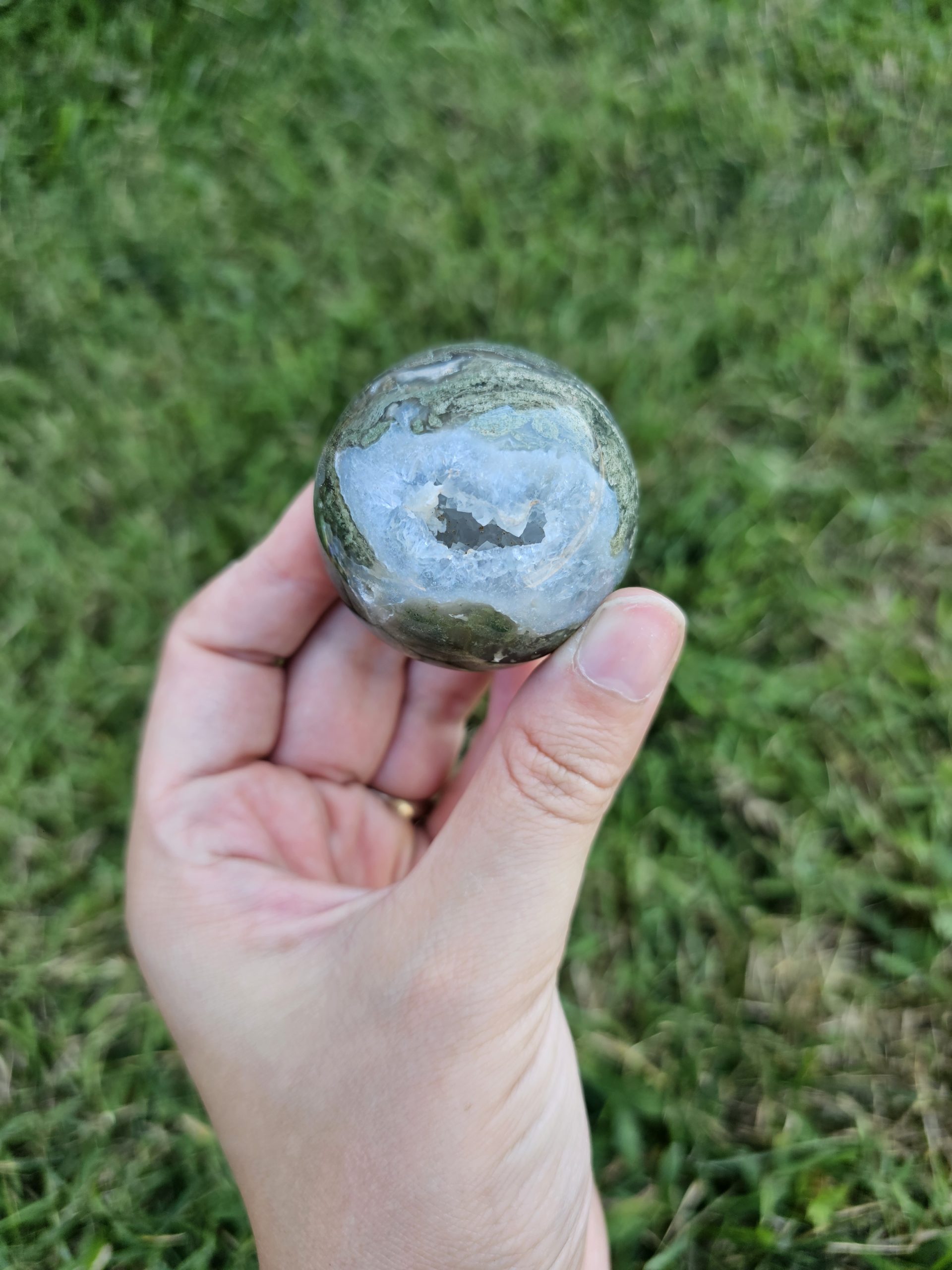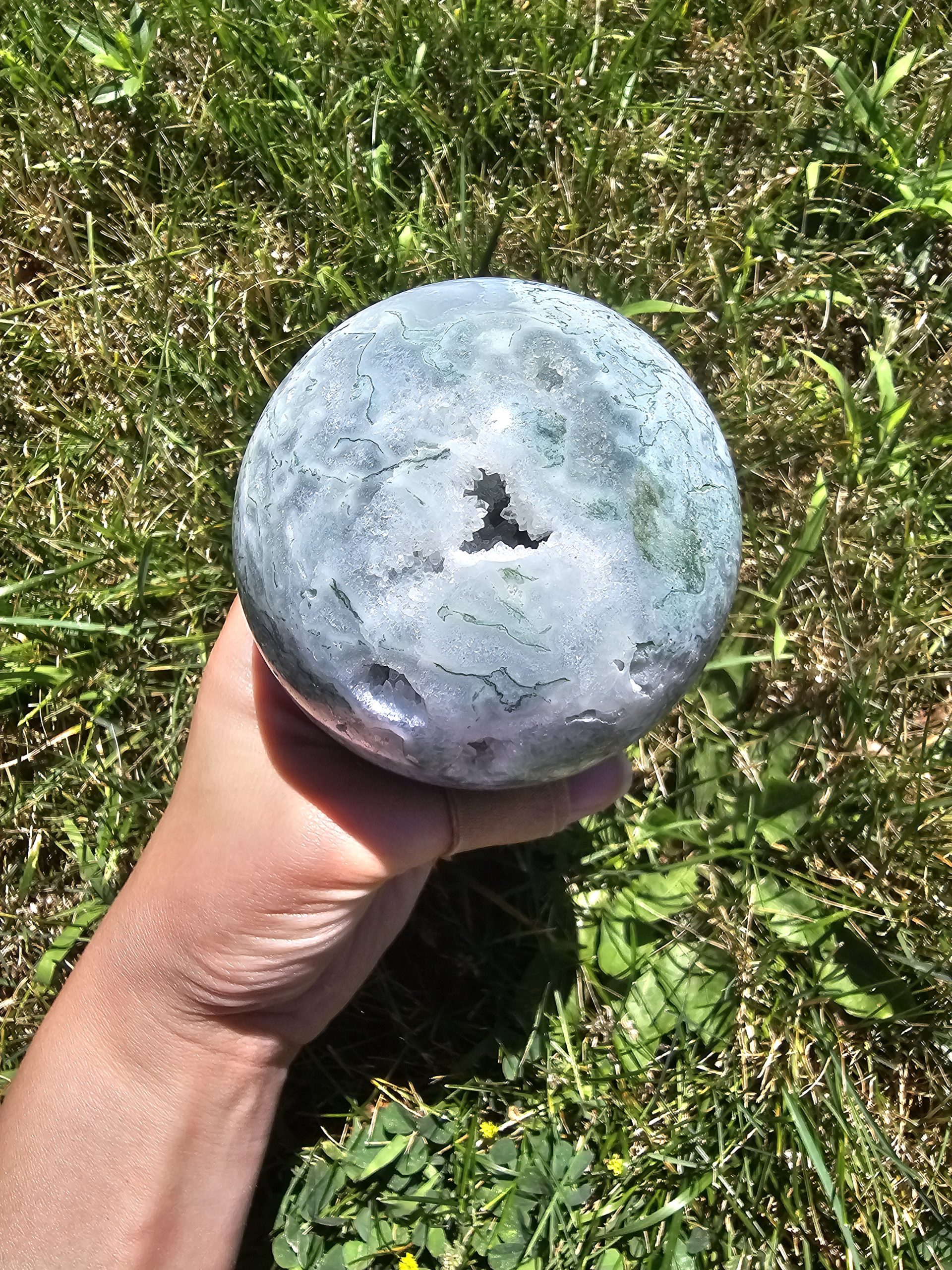-
Moss agate is a semi-precious stone. It is a variety of Chalcedony and it formed from silicon dioxide. The field of this stone is a milky white or clear quartz with blue and green inclusions that form as a result of oxides in the mineral. The dendritic inclusions are mainly made from manganese or iron that grow into patterns to give it the moss look. *All spheres come with a free sphere stand*
-
Moss agate is a semi-precious stone. It is a variety of Chalcedony and it formed from silicon dioxide. The field of this stone is a milky white or clear quartz with blue and green inclusions that form as a result of oxides in the mineral. The dendritic inclusions are mainly made from manganese or iron that grow into patterns to give it the moss look. *All spheres come with a free stand*


